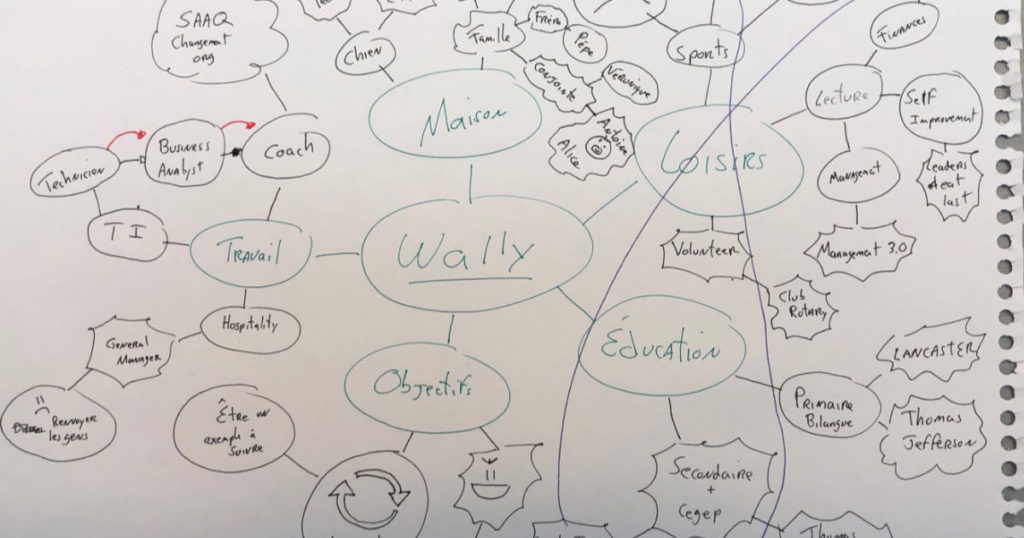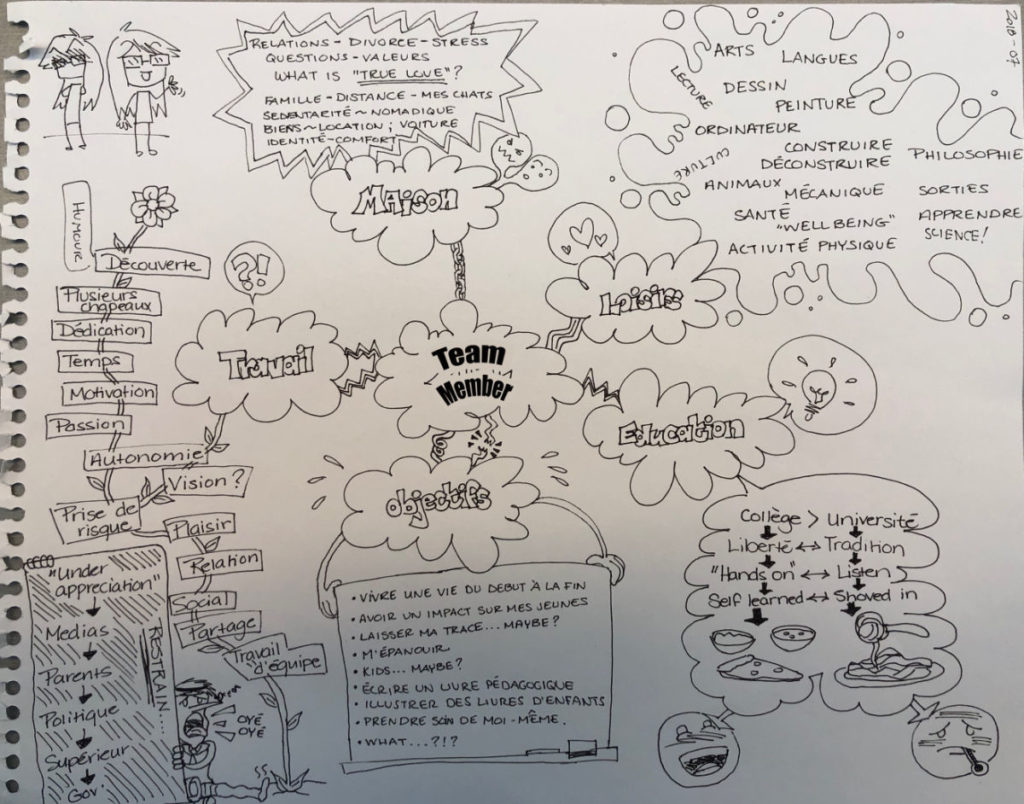By Management 3.0 Facilitator & Business Agility Strategist, Hualberto I. Aguirre
I have the privilege of being the leader at a company where fun and learning are the main goals and where Lego® is our best friend.
Since the members on our team work in different places we barely have time to interact with one another and get to know each other on a more personal level. While we’re Facebook friends — although I question how serious a friendship that is — and try to meet as often as possible to discuss life and yes, sometimes work, it’s not always enough.
I came to the stark realization, that I knew very little about my colleagues’ lives, after I challenged myself to create a personal map about each of them. That’s when I truly understood that something was wrong.

When I started the first personal map I quickly noticed that I was only familiar with pieces of my teammates’ lives but that I didn’t know enough to tell stories or make links. I even tried to find some answers through Facebook and Instagram, which resulted in more confusion.
I figured if I was having a hard time writing down details about everyone’s life, then they might be having the same issues. So I called for a meeting and that’s where the magic happened!
Here’s how we created trust and grew our connection by using personal maps
Step #1 to creating trust with personal maps: Unlocking the heart
To be sure that everyone was ready and willing to share things about themselves, I started by using Lego Serious Play® techniques. This was perfect because they were now playing with the materials they used to teach.
Step #2 to creating trust with personal maps: The power of crayons
Once everyone was ready and willing to share more details about their lives, I asked them to create a mind map with roughly five different topics such as: Home, Education, Goals, Work and Hobbies. I chose to use the same topics for everyone so they could see the links and commonalities among them. I also encouraged them to be as creative as they wanted. For example, they could use images instead of words, symbols instead of links and so on.
I have to say that some of them showed real talent with the crayons. It’s as if they were born artists. For the record, that’s not the case with me.

Step #3 to creating trust with personal maps: Sharing Someone Else’s Story
Since we’ve all known each other for a while I thought it would be a great idea to try and tell someone else’s story by presenting their map. This was successful because now we had more information that helped fill in the missing links and when we weren’t sure about something we let the person themselves tell their story. It was fun learning new things about each other.
Step #4 to creating trust with personal maps: The best and the worst
To make things even more enjoyable, at the end of the workshop I asked people to vote for the best and the worst map, which ultimately came down to design. As usual mine was voted the worst design. It’s one of the things that prompted me to pay for a design course last month:).
To Conclude….
Organizing and participating in this exercise helped me and my team get to know each other better and even discover that we had a lot of things in common. Everyone was willing to share details about their “hidden lives”, which created an even larger ‘safe space’ thus fostering trust within our team [see Johari window].
It was really nice to see that after the exercise relationships between members became stronger. Some colleagues even became really good friends outside of work and all of this because they learned that they both were interested in the same things.
The real result? Collaboration and trust was greatly increased within the team.
To learn more about personal maps, participate in one of Management 3.0’s workshops held by certified facilitators.

